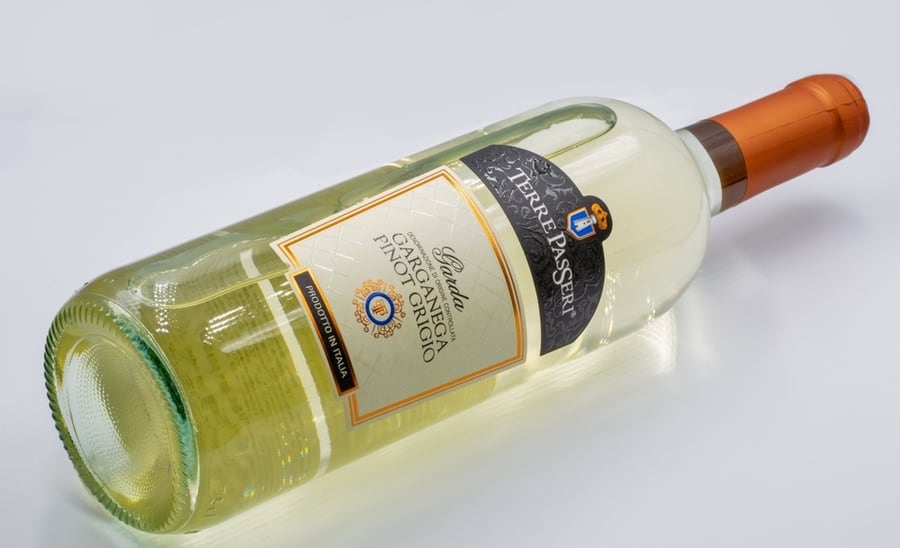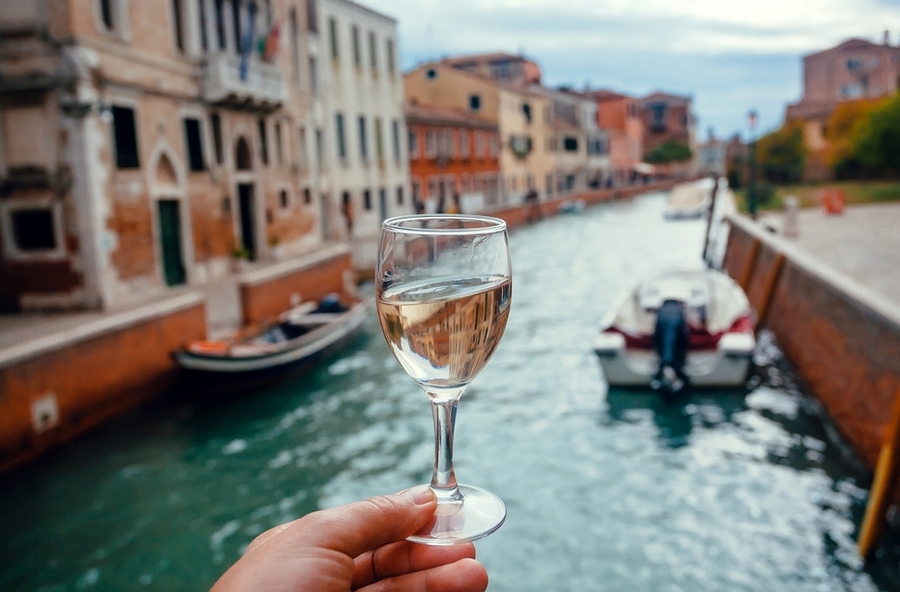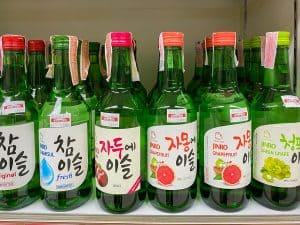
Pinot Grigio is a light, crisp wine with loads of fresh acidity. It is known by many names worldwide—in France, you’ll sip on Pinot Gris, while in Germany, you’d drink Grauer Burgunder, and in Italy, it is known as Pinot Grigio. This brings us to the question, is Pinot Grigio dry or sweet wine?
Pinot Grigio and Pinot Gris are the same grape mutated from the Pinot Noir grape. The berries are usually light red when they are ripe. Pinot Grigio wines are available in four expressions:
- Dry and minerally—Italian Pinot Grigio
- Dry and fruity—Italian Pinot Grigio
- Sweet and fruity—the French Pinot Gris from Alsace
- Romato, or rosé, is a semi-sweet wine from Friuli Venezia Giulia in Italy.
In America, Pinot Grigio is produced in Oregon and California, and although they are more fruit-forward, they are still considered dry. These wines are made to accommodate the American taste.
First, we’ll examine the differences between Italian Pinot Grigio and French Pinot Gris wines. After that, we’ll unpack the different types of Pinot Grigio wines, from mineral and dry to fruity and dry. After that sweet and fruity Pinot Gris gets its chance, we’ll finally look at the rosé version.
A Tale of Two Names and Styles—but One Grape

Pinot Grigio is the Italian name while Pinot Gris is the French name—today, our main focus will be on Italian wine. Grigio is Italian for ‘gray,’ and gris is French for the same word.
Both names refer to the same type of wine made from the same grapes—Pinot Grigio/Gris. There are, however, slight style differences between the wines depending on which region it is produced in, i.e., Italy, France, or America.
The Italian wine (Pinot Grigio) is made in the Italian style lending it a light body with citrus aromas and a dry and crisp taste and finish. The French-style Pinot Gris is often produced in Alsace and is usually a richer wine with a fuller body and can sometimes even be sweet.
Pinot Grigio/Gris delivers a white wine, although it mutated from a red wine grape. It could have been a light red wine (a.k.a. a rosé) which we will touch upon later.
Winemakers make wines from the grapes’ flesh, and the juices aren’t allowed to spend a lot of time with the skins during fermentation.
Pinot Noir grapes have a tendency to mutate into other types of grapes. Pinot Grigio/Pinot Gris is one of Pinot Noir’s mutated offspring. The grapes originated in Burgundy.
Instead of the dark, almost black, berries we associate with Pinot Noir, the mutation delivered a reddish berry skin when it was ripe.
Unfortunately, the Pinot Grigio/Gris grapes are known to be genetically unstable, so the grapes won’t deliver a consistent color from one harvest to the next.
Let’s compare the differences between Pinot Grigio and Pinot Gris wines below.
| Pinot Grigio – Italy | Pinot Gris – France |
|---|---|
| Dryer Italian wine, cultivated widely across Italy | Fruity, French-style wine cultivated widely in France |
| Light-bodied, known for mineral and citrus flavors | Full-bodied, fruity, with a tropical flavor |
| Prices range between $3 and $150. (Mass-produced making it more affordable) | Prices can range between $4 and $1,000 (yikes!) |
| Fermented in steel tanks leading to the crisp acidity | Fermented in neutral French oak barrels resulting in spice notes while keeping the fruity flavors intact |
| Harvested earlier to preserve the floral aromas, stone fruit, and citrus notes | Often late harvest grapes that are allowed to develop botrytis (hence the sweetness) |
For a deep dive into both grapes and their resultant wines, we’d recommend looking here at Pinot Grigio and reading about Pinot Gris here. We’ve got the background, but is Pinot Grigio a dry or sweet wine? Read on to find out because we’ve got a few surprises in store for you!
Characteristics of Pinot Grigio

Italian Pinot Grigio’s acidity helps to keep the wine silky smooth without being too sweet. Typical Italian Pinot Grigio has the following characteristics:
- The wine is usually straw yellow
- Low tannins give this dry white wine a light body
- The typical flavors you can expect from Pinot Grigio range from green apple to melon, while subtle tropical or citrus fruit tastes are also common
- On the nose, you’ll note lemon and lime, apricot, pear, peach, baking spices, almonds, and honeysuckle.
- Pinot Grigio doesn’t reach an ABV higher than 13.5%, and usually, it ranges between 11.5% and 13.5%
With this info in mind, let’s consider the different types of Pinot Grigio wines next.
Is Pinot Grigio a Dry or Sweet Wine?

There is no simple answer to this question. When we consider that Pinot Grigio is mass-produced (this does not detract from its quality!), winemakers tend to produce dry white wines. But not everything is so clearcut in the world of wine.
We’ll investigate the four styles of Pinot Grigio:
- Dry and minerally
- Dry and fruity
- Sweet and fruity
- Rosé—the in-between wine that falls between a red and a white wine
1. Dry and Minerally Pinot Grigio
This style looks to the Italian Alp mountains for inspiration and cultivation. The vineyards grow in steep alpine valleys from Italy through Austria and into Slovenia and Hungary. The mountains ensure the grapes maintain their high acidity. As a result, these wines usually lack fruity flavors, which is compensated for by the saline/mineral qualities you’ll taste. Additionally, it retains its acidity because the wine is not aged in oak barrels nor subjected to malolactic fermentation.
The wine is produced in steel tanks, making a lean, zippy wine high in acidity with citrus notes alongside the mineral salinity. Many regard this as the ultimate expression of Pinot Grigio—simple, thin, acidic, and refreshing.
Food pairings: the minerality and slightly saline taste pair well with seafood dishes such as shellfish, mussels, French fries, and sushi are all excellent pairings—light pasta dishes without tomato or citrus elements. Gruyere and manchego cheeses are also beautiful accompaniments to this dry and acidic style of wine.
2. Dry and Fruity Expressions
Sometimes, Pinot Gris is used to describe this expression which is popular in the New World regions (Argentina, Australia, California, New Zealand, and Oregon). The typical tastes you can expect include yellow apple, white peach, and lemon. An ‘oily’ mouthfeel is also present in the wine due to partial malolactic fermentation, where particular bacteria convert the sharp-tasting acids to smooth-tasting compounds.
Food pairings: you might want to consider including seafood like shellfish and salmon, sauteed vegetables, and a hearty, flavorful turkey. Cheeses such as Grana Padano, Muenster, and Gruyere complement the wine perfectly.
3. Outliers: Oregon and California
American wines tend to be more fruit-forward, less acidic than their Italian and French counterparts, and geared to the American taste. However, these American styles are still considered dry. Let’s investigate them below.
Oregon
These wines are light to medium-bodied with less acidity and bold fruit flavors. The wines also have a buttery or rich texture because the winemakers use malolactic fermentation.
Food pairings: include creamy chicken pasta dishes, stuffed pork tenderloin medallions, and salmon.
California
In California, they take the Italian approach to making wine combined with the bold flavors we see in Oregon. The wines are either labeled as Pinot Grigio or Pinot Gris. But, again, the wines are geared to American tastes.
Food pairings: the taste doesn’t focus on acidity and minerality but on fruit tastes—like salads, light chicken or pork dishes, and grilled vegetables. Seafood dishes are also a great option.
4. Sweet and Fruity Expressions
The French version, Pinot Gris, hails from Alsace in France. This iteration is considered the sweet version of Pinot Grigio.
You can expect flavors such as crisp apples, honeycomb, and sweet lemon candy with this wine. Other flavors include cinnamon, ginger, and clove. The aftertaste is long and tingly.
Advanced vineyard techniques such as botrytis, known as noble rot, increase the wine’s sugar content.
Look out for the following on bottles from Alsace:
- Grand Cru refers to the 51 Grand Cru vineyards in Alsace.
- Vedages Tardives, which is a late harvest and sweet dessert wine.
- Sélection de Grains Nobles, in English’ our best ever,’ is a scarce style of Pinot Gris which uses grapes left in the vineyard exposed to botrytis, or noble rot.
Because of the wine’s sweetness, you guessed it, it makes the perfect after-dinner wine.
5. The Surprise In-Between Wine
The rosé version, known as Romato, is produced in Friuli Venezia Giulia in Italy. The name comes from the Italian rame, which translates to copper.
The term implies lighter than the amber hues of orange wines yet darker than pink rosés. The pale purple skins of the grapes are allowed to macerate with the juice, just like rosé, between 24 and 36 hours.
You can expect tastes like white raspberry, sour cherry, and leather. You may sometimes even detect herbaceous notes and hints of baking spice in addition to the familiar citrus, tropical, or pear qualities associated with Pinot Grigio. The finish can either be cranberry or sometimes even a meaty note.
If you’d like to know more about this unique wine, follow this link for a deep dive.
Serving Pinot Grigio

Pinot Grigio tastes terrible when it is not served at the right temperature or not paired with the right foods. Stemware also plays an important role when you serve Pinot Grigio.
Food Pairings
The fresh and mineral tastes of Pinot Grigio are often served with Italian cuisine. It is also a suitable wine to serve as an aperitif.
To recap, salads, light casseroles, and white meats like chicken, turkey, and pork. Seafood such as shellfish, sushi, salmon, and mussels are also great accompaniments to consider. Pasta dishes are an excellent choice, but avoid those that contain tomatoes because they will clash with the wine.
Richer, fruit-froward versions of the wine are richer and spicier and harmonize well with mushroom dishes such as risotto, light roasts, grilled fish, and poultry. Don’t shy away from strong cheeses and game dishes—they can make excellent partners to the wine.
The sweet Alsace Pinot Gris should be reserved as an after-dinner wine, but consider pairing it with desserts containing almonds, honey, and marzipan or forego dessert altogether and serve the wine with a high-fat blue cheese.
Serving Temperature
The drinking temperature depends on the type of wine, and Pinot Grigio’s light color tells you that it should be served chilled.
The ideal drinking temperature is between 45ºF (7ºC) and 50ºF (10ºC).
If your bottle of wine is not at the perfect temperature, it should be tempered—a technical term for warming or cooling the bottle. Romato, the rosé version, should be on the warmest side of the recommended temperature scale. Aged Pinot Grigio wines are served slightly ‘warmer’ around 57ºF (14ºC).
Glassware
Finally, the glasses you use to serve are also important. The classic white wine glass is the perfect choice for serving Pinot Grigio—the stem is long enough to keep your hand’s heat away from the bowl of the glass.
The bowl of the glass also allows more oxygen to interact with the wine and allows the aromas to develop.
Conclusion
Pinot Grigio and Pinot Gris are the same grape, yet they are made in different styles. Italian Pinot Grigio is considered a dry white wine with either a dry and mineral/saline expression or a dry and fruity expression. The French counterpart, called Pinot Gris, is fruity and sweet.
American Pinot Grigio wines are still dry but tend to be fruit-forward following American tastes. Romato, or rosé Pinot Grigio, still has the characteristic minerality and fruitiness you’d associate with an Italian Pinot Grigio.
Additionally, Romato is slightly darker than a standard rosé wine but lighter than a red wine—a true in-betweener for those who love rosé wines. Overall, Pinot Grigio is a dry white wine that’s best served well-chilled in a white wine or chardonnay glass. It pairs best with a wide variety of light dishes.









